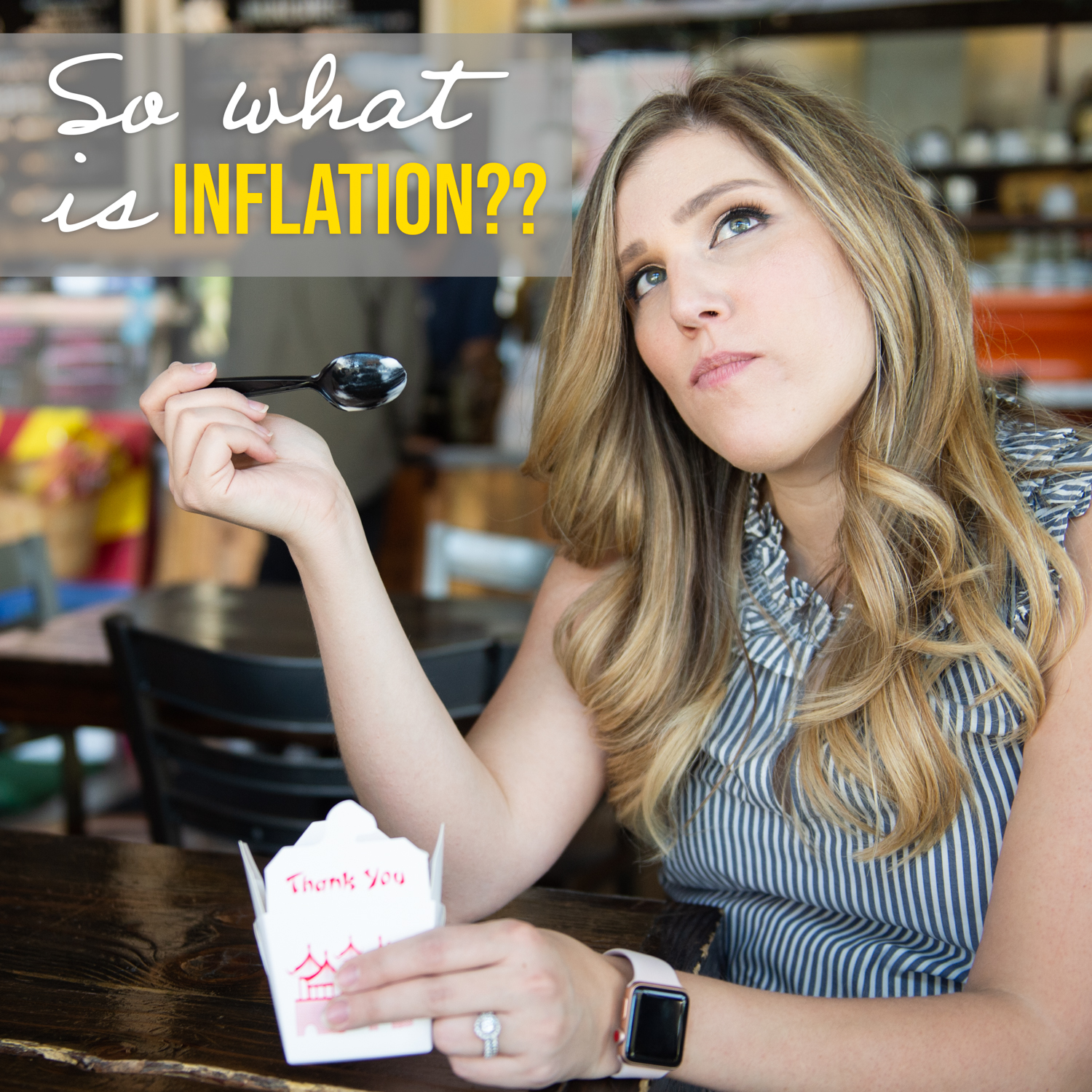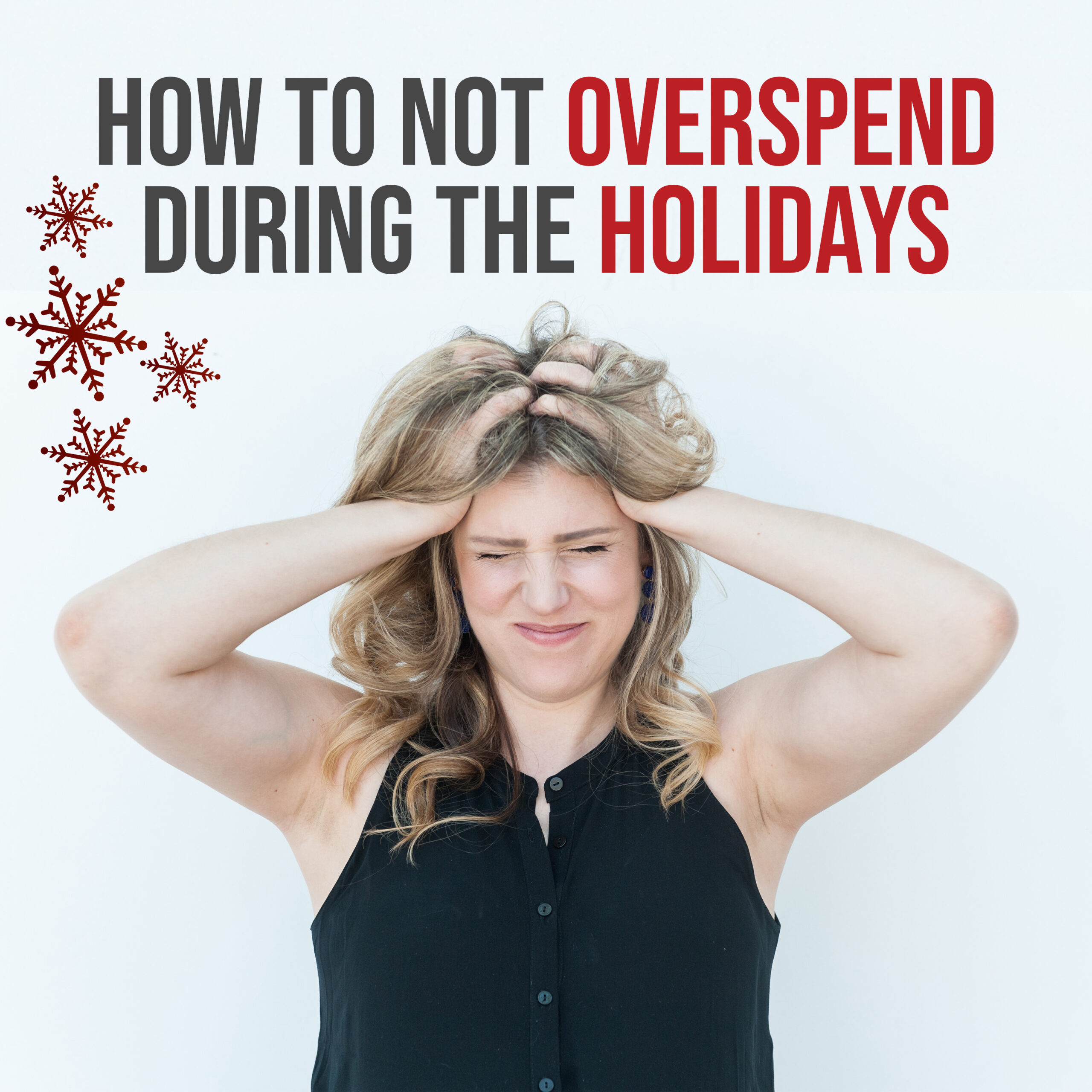Blog
Getting from point A to point B is a lot more involved when you are moving your life from point A to point B. Chances are we’ve all moved, are in the process of moving, or will move homes at some point in our life.
Seeing as how my goal is to help you make financially smart decisions when buying or selling your home, I am touching on a very important topic: the actual physical move itself!
Moving expenses can range anywhere from $350 for a one bedroom apartment, to $2,000 for a four-bedroom home — and that’s just for moving services, locally! What about things like packing, packing supplies, unpacking, and new items you’ll need in your home?
I’ve comprised 5 tips (based on Money Tips from previous weeks) that I’m sure will save you time, stress, and money — and a couple free resources too!
1. Use a Checklist
With something that has so many moving pieces (pun intended?) — it’s crucially important to stay organized: for you budget, and for your sanity. Checklists will help you with a number of different tasks: moving essentials, timeline tasks, first night necessities… where there’s a task, there’s a checklist. And since my task is to give you everything you need to make smart home purchases, here’s a simple must-have checklist for when you are preparing to move!
2. Multiple Moving Quotes
Do your research, and I don’t mean scour the internet for the lowest price. Often times, the cheapest on the internet may not be the cheapest in the long run. Replacing items that are accidentally damaged or broken can end up costing you hundreds if not thousands of dollars. The horror stories are out there, and unfortunately they are not few and far between. Find quotes for at least 3-5 moving companies with great reviews and/or personal recommendations. Then, use your research to negotiate. Are they willing to price match? If not, can they add things like boxes, unpacking, or additional labor? The more information you have, typically the more money you will save.
3. Purge
It basically comes down to two simple questions:
“Will I be upset when unpacking this item?”
“Will I be excited to place this item in my new home, or will I groan at past me for packing it?”
Imagine yourself unpacking your least favorite pair of shoes, near empty shampoo bottles, knickknacks you have nowhere to place, and toys your kids haven’t played with in years. If you’re like me, these thoughts are less than appealing. Don’t pack things you won’t want in your new home. And remember, “purging” doesn’t simply mean “throw it away”, this could mean donating or selling items as well!
And of course, we’ve got a checklist for that, too.
4. Toolbox and cleaning supply box
This is one of the most practical, easily applicable tips, that can end up saving you so much money! Put your toolbox and a cleaning supply box in the front seat of your car. SO OFTEN when people move, they’ll end up buying extra things that you don’t need because you can’t place the ones that they already have. That extra duct tape, window cleaner, paper towels, or flat head screwdriver can end up costing you money that you just don’t need to spend. You can really take this tip to heart by labeling all of your moving boxes accurately! Don’t write something ambiguous thinking, “Oh yeah, I’ll remember what that means later.” You won’t. Moving is crazy! More details are always better. Give labels based on room and what’s inside, and try to resist from using “MISC”.
5. Amazon Boxes!
A simple tip. If you are planning to move, start collecting your Amazon (or any other boxes your might be getting) now! Seriously, you may feel like a hoarder, but if you break the boxes down and stow them in your garage or under guest bed or wherever until you need them, you’ll thank yourself you did! Also, if you personally don’t receive any boxes, I’m 99% certain that someone you know, does! Amazon boxes alone are everywhere. We get them almost daily. Email me for dibs. 😉
Okay, and a bonus tip! Because I personally am involved to some extent with so many families moving: plan your move a year to six months before you actually move! I know this sounds like an extended timeline, but believe me, this stuff takes time. The more prepared and organized, the more money you’ll save!
I hope these tips, bonus tips, and bonus checklists give you the can-do attitude you need to tackle any move. I know these tips will help you ensure that every hard earned dollar you make works for you, even during a whirlwind of a time like moving!
To those of you who have moved more than once, what advice would you have to those going through a move, maybe for the first time? Please feel free to share in the comments below!
November 4, 2019

Sometimes the things we hear about credit scores end up being like when a story gets exaggerated from person to person. You know, like that time you saw a spider the size of a quarter in your shower, but when you told your friend about it — it was the size of your hand…
A lot of it is misinformation, to begin with, but when presented alongside fear-based sales tactics… the truth becomes pretty skewed.
Today I’m confronting some of the urban legends you may have heard about credit and presenting the truth, the whole truth — and nothing but the truth.
Let’s begin the debunking process by laying all the cards out on the table…
Key terms we need to know:
Credit score – The numerical expression of your creditworthiness that banks use to loan out credit. Banks and credit companies have developed algorithms that use this number to determine how likely you are to repay on a line of credit.
FICO – aka Fair Isaac Corporation. I hear you, “Okay great, who’s Fair Isaac?”
Quick history lesson! (trust me, this is important!) Back in the 1960s, Fair Isaac literally pioneered a revolution by creating credit risk scoring for the financial services industry. His new system allowed businesses to properly analyzing risk on loans, and also expanded consumer’s access to credit. Quite literally, a game-changer. Pretty cool how to see how far “being ahead of the curve” catapulted the Fair Isaac Corporation, as Fair Isaac’s FICO score is widely recognized as the industry standard for lenders!
“Free Credit Report” – This type of report that you can pull from home is provided by a company called Vantage. Their business model tried to compete with FICO by providing transparency to consumers, allowing them to see their credit scores and what was affecting them in (relatively) real-time. However, FICO and Vantage are two separate companies… with two separate algorithms for determining your “credit score”. This is why often times your credit report that you pull does not match your FICO score when applying for a loan!
Hard Credit Pull – A request for credit the releases your official credit score
Soft Credit Pull – This report basically just shows what’s there on your credit report. (ie: payment history, current lines of credit, outstanding balances, etc.)
Alright, now that we are experts in credit terminology let’s get to the good stuff: the truth!
So what makes up your credit score anyways?
30-35% CREDIT HISTORY
This typically has the biggest effect on your overall credit score. How long have you been making on-time payments? The better your payment history the better your score. Makes sense.
30% YOUR AVAILABLE CREDIT
This is how much you owe based on how much is available to borrow. What lenders are looking for is no more than 30% of your available balance to be borrowed at any given time.
15% LENGTH OF TIME
How long have you had a history with lines of credit? Months? Years? A longer exposure to credit (with on-time payments) will help boost your score.
10-15% DIVERSIFICATION
What types of credit loans make up your credit history? (ie: Installment loans, long-term loans, short-term loans, credit card debt, etc.) Many credit users benefit from having a diversified credit profile.
Less than 10% NEW CREDIT AND INQUIRIES
This is the item I swear that gets the most media attention, and it actually has the lowest impact on your overall score. Since a new line of credit doesn’t showcase your good behavior to a potential lender, it’s kind of just a big question mark. Why was this line of credit opened? Will you continue making the payments on time? Since there is some question here, it does mean more risk for the lender — which is why it affects your score negatively.
As far as inquiries go, you will often you’ll hear loan providers, well-meaning friends, or family tell you that if you shop your home loan, your credit score will drop! While this is true, some salespeople will use this more as a scare tactic to prevent you from doing your research. Multiple inquiries (3-5 credit pulls) for the same installment debt will count as one inquiry and will not have an impact on the score, so long as the “shopping” is done within 45 days. Inquiries will show on a credit report for a maximum of two years, and only impact your credit for 1 year. Typically, it will only drop your score if you have 6+ different credit pulls for various types of credit lines as some statistics correlate this many credit applications with a greater risk for bankruptcy.
My advice? When you’re pursuing a home loan, work with a reputable lender who can help you maximize your buying potential. Start shopping for a rate within 30 days of your home purchase, as this should keep everything under the “45-day” umbrella!
I hope you learned something you didn’t already know about your credit! Why? Because it’s YOUR credit! And my goal is to empower you by giving you the knowledge to make smart financial decisions. Are there any other urban legends that you may have heard about credit that you’d like me to address? Let me know in the comments below!
October 28, 2019

What is Inflation, Really?
I can remember learning about inflation in school. Germany’s economy during the Weimar Republic falling apart at the seams. Crazed civilians running around with wheelbarrows full of cash to buy a loaf of bread. Let me start by saying, NO, this is not the normal inflation that occurs in our economy. This was an extreme case scenario of hyperinflation and doesn’t reflect the typical effects of inflation. Thank goodness!
When you hear talk in the media of “next next recession” or “inflation” or anything of this nature, let me tell you, it is not a reason to panic. Making fear based decisions is actually the worst thing you can do, but we’ll get to that in a minute.
Let’s start with the basics.
What is inflation, really?
Simply put, inflation is the measure of the increase of costs of goods and services. This in turn means that as the cost of these goods and services go up, the value of our dollar goes down. This can happen a couple of different ways…
Supply and Demand:Think of something that’s released in a limited quantity. (ex: limited pairs of a certain type of shoe, or something that is difficult to make) We call this scarcity. And it creates room for resellers to buy the product and then sell it at a higher rate.
Cost Increase: When the cost of materials to make a certain product go up due to scarcity of resources (either physical resources or manpower to create the product), this in turn raises the price of the product. Think of the great avocado drought. Okay, I don’t know if it was actually called that… but for whatever reason avocado season’s crop return didn’t yield what it normally does a few years ago… so farmers had to charge more for avocados to make up for the deficit and keep things competitive between buyers… it was a sad day for everyone who wanted avocado toast.
Built-in: As costs increase, workers expect (and demand) higher pay to maintain the cost of living. However, this increase in pay results in companies charging more for products and services to make more money to pay employees, which then leads to higher prices for the goods and services, which then lead to demands for wage increases… and so the spiral begins. Because of this circular dependence, built-in inflation is sometimes also referred to as the wage-price spiral.
So what happens when inflation is present in our economy? (And are there any benefits?)
What happens is what economists call an erosion of purchasing power. Meaning, the dollars that we have today can’t buy the things that we want and need yesterday. When costs of goods increase, the same twenty dollar bill you have in your wallet won’t buy you the same products it could yesterday. It will actually buy you less. Make sense?
So if your twenty dollars doesn’t buy you the same things, or your gas tank costs double — it results in a decrease in purchasing power. Queue: FEAR. The frantic voice in your head telling you, “Buy now or you will never have this opportunity again!”
Fear is a terrible place to make investment decisions from. It’s what drove me to buy a home at the height of the market in 2006. Which, I’ve shared before, was not a smart decision that ended up losing me a lot of money. Herd mentality rules in financial crisis, and it often leads to poor decisions.
So, is this all just happening, or is somebody going to do something?
There is a weapon against inflation, and it lies within the power of interest rates. The Federal Reserve increases rates of loans given to banks and businesses from the government to invest in new technology or employment. This is turn slows production, which then controls the growth of the economy.
And this, is your moment, to carpe diem. One of the only benefits is in relation to mortgages. I know I know, “so bias”, but it’s the truth! Stick with me…
We find this benefit in what is called the “time value of money.” And it only occurs in fixed rate loans.
Let’s say you borrow sixty-thousand dollars to buy a home. The amount loaned to you by the bank is always going to be, sixty-thousand dollars. No matter what. The catch is, that sixty-thousand dollars may not have the same value 30 years from now. Remember what happens with inflation — the cost of goods and services goes up, and the power or value of our dollars go down. So your sixty-thousand dollar loan itself is worth less and less. When you attach it to an asset like a home, that asset will stay constant with whatever the value of money is today. Even though the value of YOUR loan is valued on what it was worth a long time ago. Pretty cool, right?
There’s always a silver-lining, there’s never a good time to make a decision out of fear, and inflation is a normal occurrence in any economy. Keep adding knowledge and wisdom to your tool belt, and I trust you will make the smart financial decisions that are right for you and your family. The key is to stay educated! What are the biggest takeaways you have about inflation? Let us know in the comments below!
October 14, 2019

How to Make Economy-Proof Investments
Wouldn’t be nice if all it took to put this blog together was some secret that always and without fail, would grow your money if you chose to invest in it? Some sure-fire-no-nonsense tactic you had just SOMEHOW never heard about? News flash: if you’ve ever heard someone pitch an investment opportunity or financial strategy that seems too good to be true, it’s probably because it it.
Don’t get me wrong. I’m no pessimist, but I do know that making solid investments takes knowledge, understanding, and an eagerness to always be learning. What I mean is, people don’t typically stumble their way into financial freedom; they work hard and strategize for it!
Every week, my goal is to continue filling your tool belt with tips and resources to put you on a pathway to success. Last week we talked about using the SMART acronym to analyze every financial investment you make. (If you missed last week’s blog, you can either touch back here, or continue along with us! I’ll be sure to provide refreshers.)
As we move towards making any financial investment, we must ask ourselves 5 simple questions:
S – What am I spending?
M – What am I making?
A – What are my assets?
R – What is the risk and the potential return?
T – How much time do I plan on keeping this investment or asset? What effect with that timeline have on me?
What better way to learn how to make SMART decisions than to sit down with a friend and work through a real-life decision at hand?
Let’s talk about MBAs in the framework of the SMART concept… Tune in and let us know what you think in the comments!
October 7, 2019



